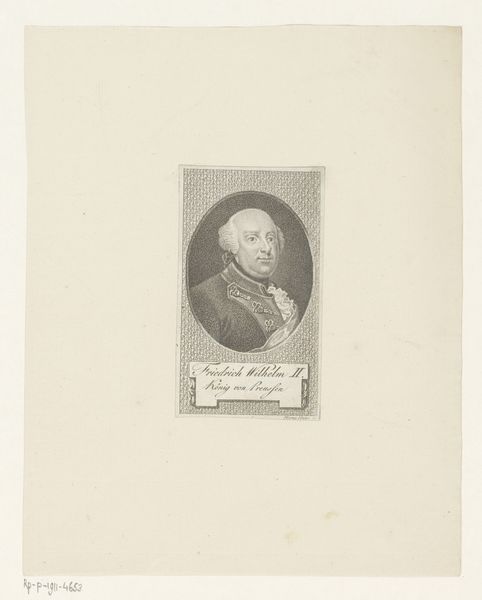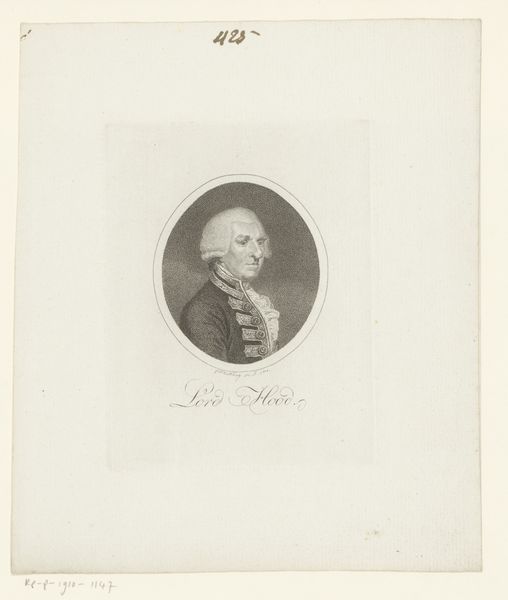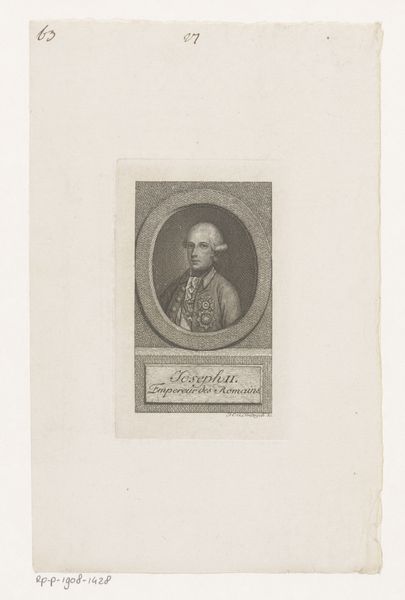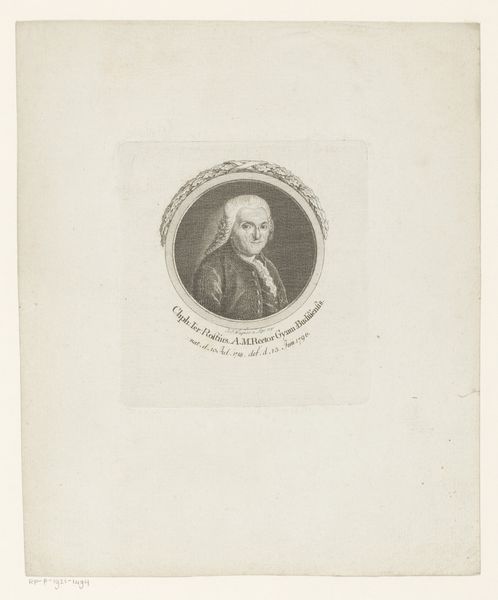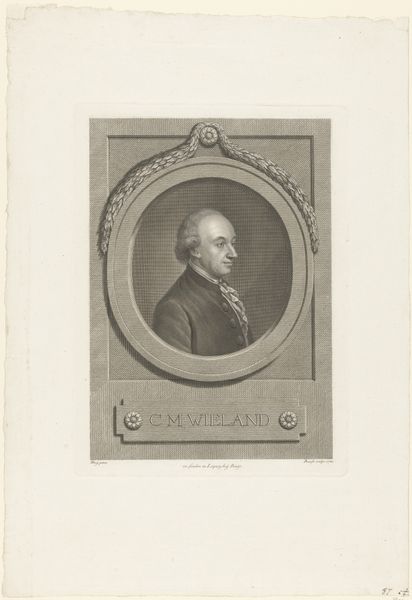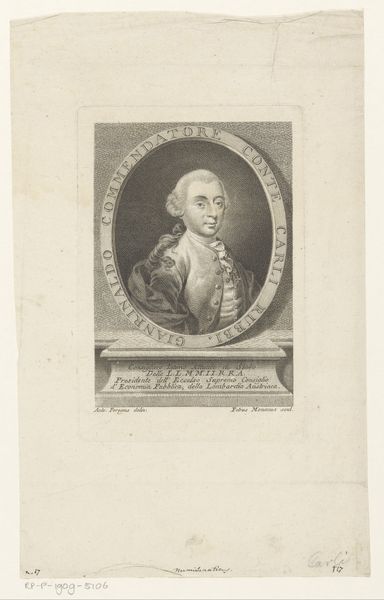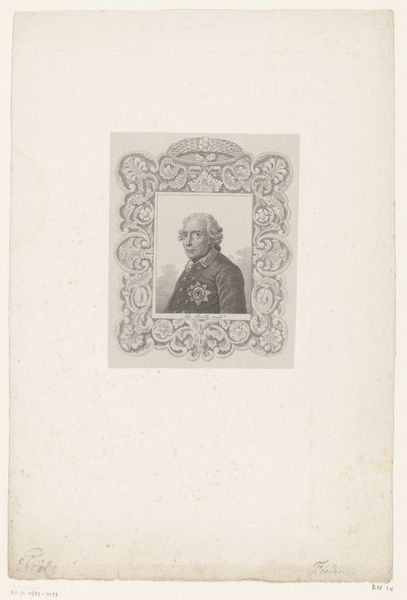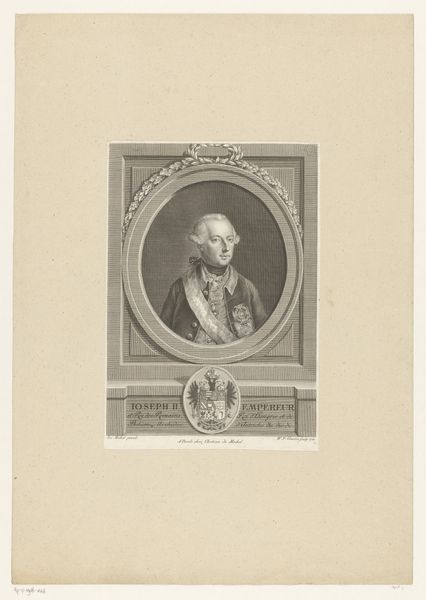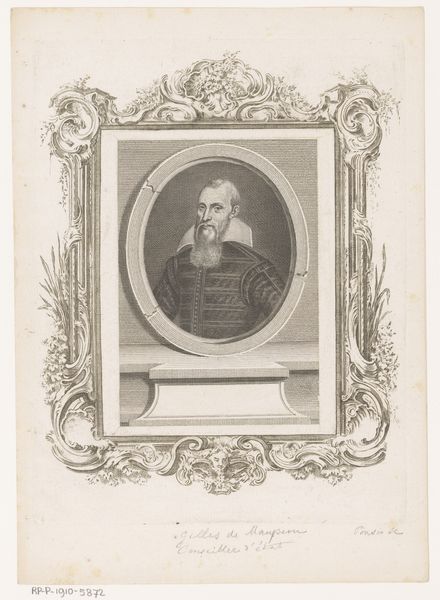
print, engraving
#
portrait
#
neoclacissism
# print
#
old engraving style
#
classical-realism
#
figuration
#
form
#
line
#
academic-art
#
engraving
Dimensions: height 192 mm, width 134 mm
Copyright: Rijks Museum: Open Domain
Curator: Johann Josef Neidl's "Portret van Clemente Bondi," created sometime between 1786 and 1832, offers a fascinating glimpse into a particular era of portraiture. It's an engraving, a medium capable of incredible detail. Editor: The first thing that hits me is the contrast. The subject, enclosed in an oval frame of what appears to be... laurel? But beneath him, a swan, very cleanly rendered. Is there supposed to be a story there? It feels like two unrelated symbols awkwardly forced together. Curator: The combination certainly creates an interesting tension. Neidl worked within the Neoclassical movement, a style which harked back to the art of ancient Greece and Rome, hence the laurel wreath and idealized form. As for the swan, perhaps it's a reference to Bondi's own virtues – grace, purity, or maybe it simply reflects the patron’s aesthetic preferences. Who exactly Clemente Bondi was remains elusive, further deepening the image’s mystique. Editor: Well, someone certainly paid good money to have this engraving done, and that material transaction tells us a lot about art patronage at the time. We can consider that the paper, the ink, the craftsman’s labor involved – all these elements contribute to a commodity produced for a certain class. Was this portrait intended for wide circulation, perhaps as part of a book, or was it made for a private collection, do we know? The production of this image surely speaks volumes about material culture during this historical moment. Curator: That's a valid point. Engravings played a vital role in disseminating images and ideas during the period, before photography became widespread. Although often reproduced, they often carry subtle nuances. Look closely at the fine lines, the delicate shading Neidl employed to render Bondi's face – there’s a vulnerability that’s quite palpable despite the idealized presentation. There's something quite ghostly and transient about holding his gaze over centuries. Editor: Agreed, the skills involved in making this print shouldn't be underestimated, but for me, seeing it as one object amongst many highlights the socioeconomic frameworks around artistic creation. Ultimately, who could afford to make and display art? What types of material, subjects, and styles became popular because of these dynamics? These considerations shed light on more than artistic skills but about class and society. Curator: And understanding the "who" behind the "what" allows us a deeper appreciation of artistic expression! I enjoy stepping into the engraver’s mind, and envisioning their delicate, steady work. Thank you, Johann Josef Neidl for creating something enduring, not just of Clemente Bondi, but also this artistic record from so many years past. Editor: Definitely, it reminds me to appreciate art by questioning the status quo and recognizing the underlying processes. We hope you are just as enlightened as we are now!
Comments
No comments
Be the first to comment and join the conversation on the ultimate creative platform.
